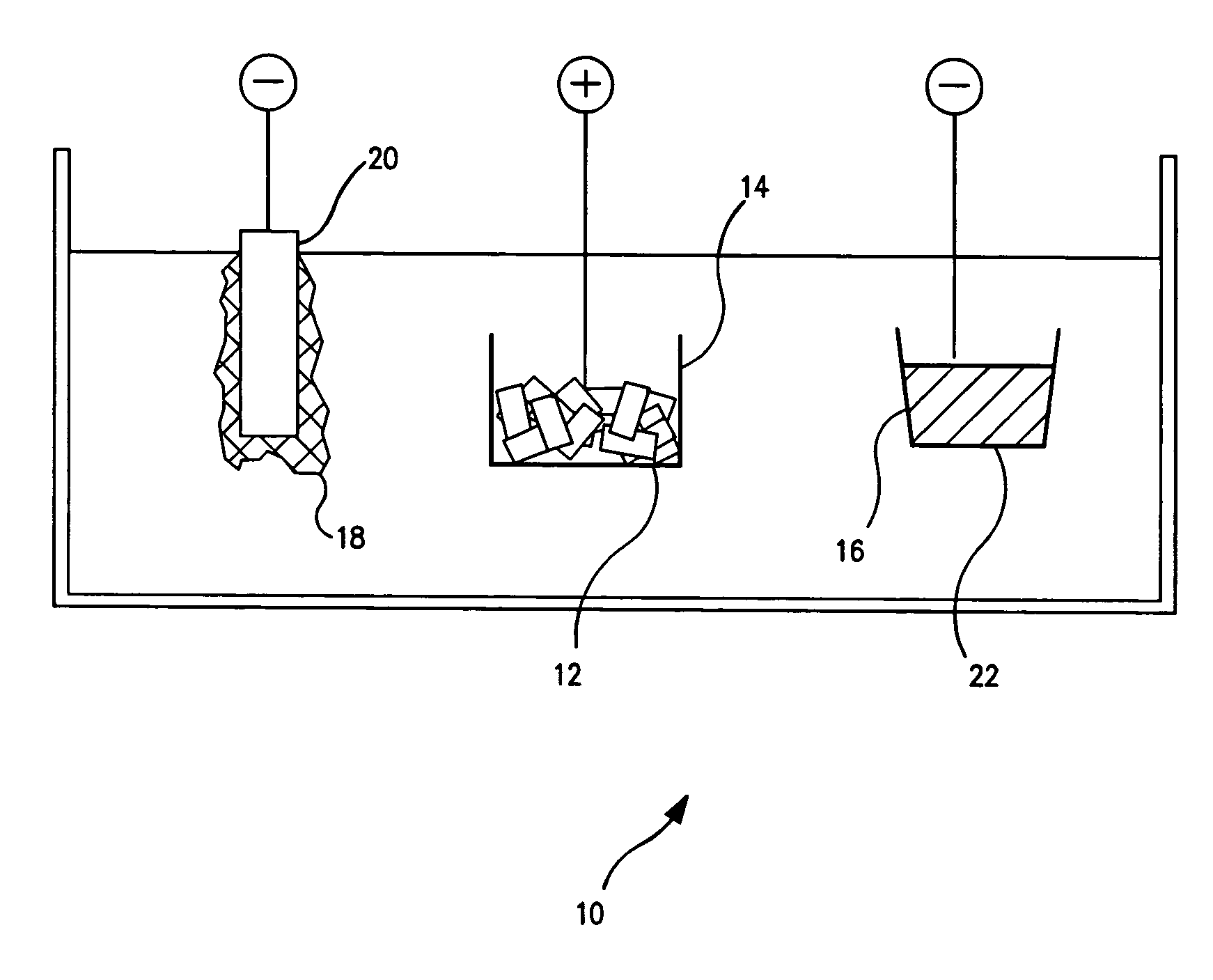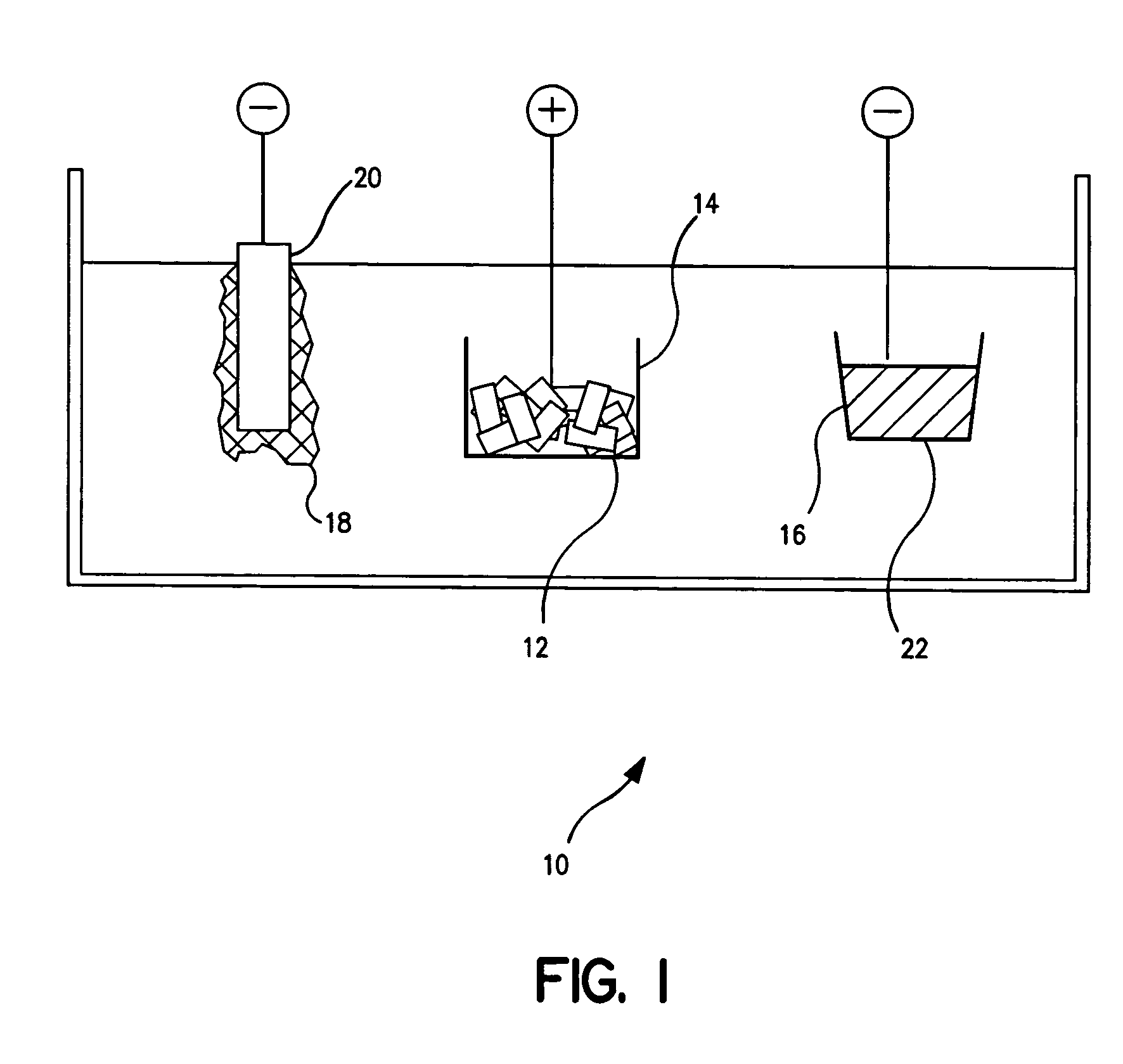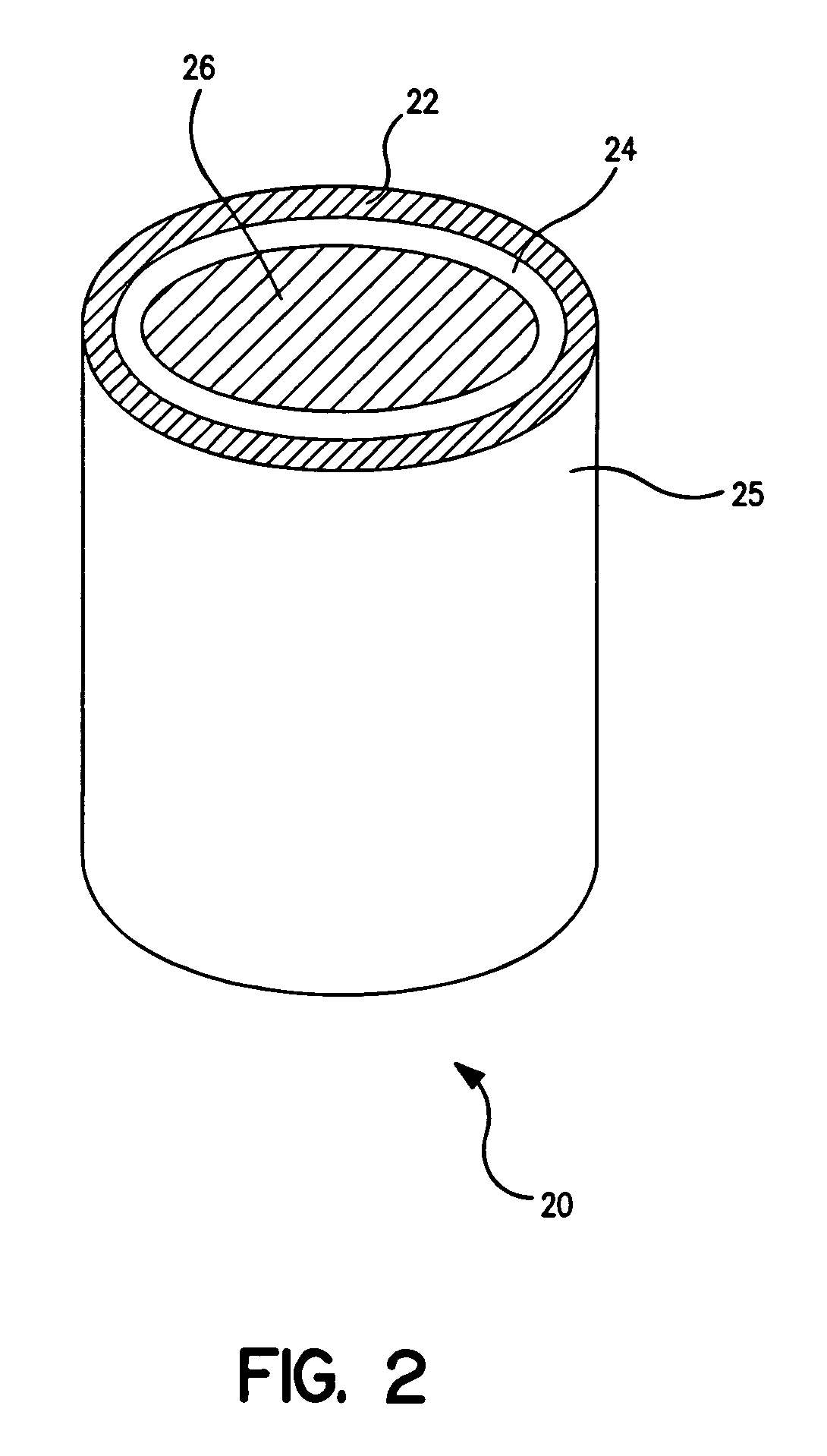Porous membrane electrochemical cell for uranium and transuranic recovery from molten salt electrolyte
a technology of which is applied in the field of porous membrane electrochemical cells for uranium and transuranic recovery from molten salt electrolyte, can solve the problems of patent disclosure of electrorefining method, and achieve the effects of less expensive, less volatile moieties, and less volatile moieties
- Summary
- Abstract
- Description
- Claims
- Application Information
AI Technical Summary
Benefits of technology
Problems solved by technology
Method used
Image
Examples
example
[0058]Four slots were cut into an aluminum nitride crucible so that the slots extend parallel to the longitudinal axis of the crucible. The slots serve as a means to facilitate fluid communication between the annular space (defined by an exterior surface 25 of the crucible and the barrier) and the interior 26 of the crucible. One layer of porous alumina felt (>90% porous) was wrapped around an aluminum nitride crucible. The wrapped crucible was placed in a larger steel container containing molten LiCl—KCl typically with from approximately 5 wt. % to 7 wt. % UCl3. (The solubility limit of UCl3 in the melt is 50 wt. %). A cathode was placed inside the wrapped crucible and some metallic uranium was added to the salt in the outer steel crucible, which also served as the anode. When a constant voltage (˜1 volt (V)) was applied between the cathode and anode, the current decayed as time progressed. A sample of the salt from the cathode region of the cell, taken after the current had decaye...
PUM
| Property | Measurement | Unit |
|---|---|---|
| applied voltage | aaaaa | aaaaa |
| melting-point temperature | aaaaa | aaaaa |
| melting-point temperature | aaaaa | aaaaa |
Abstract
Description
Claims
Application Information
 Login to View More
Login to View More - R&D
- Intellectual Property
- Life Sciences
- Materials
- Tech Scout
- Unparalleled Data Quality
- Higher Quality Content
- 60% Fewer Hallucinations
Browse by: Latest US Patents, China's latest patents, Technical Efficacy Thesaurus, Application Domain, Technology Topic, Popular Technical Reports.
© 2025 PatSnap. All rights reserved.Legal|Privacy policy|Modern Slavery Act Transparency Statement|Sitemap|About US| Contact US: help@patsnap.com



